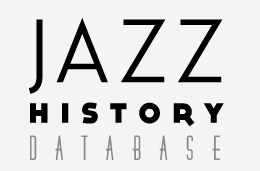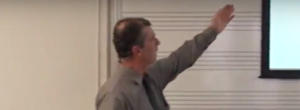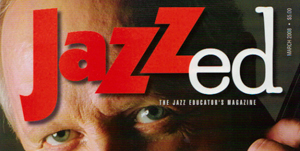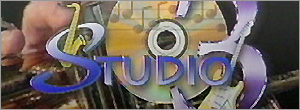About the Jazz History Database
The Jazz History Database is an active and growing library of materials focused on the preservation and education of the history of Jazz. We invite jazz historians, musicians, family members, educators and students to contribute materials!
The Database is a service of the Massachusetts Association for Jazz Educators (MAJE). All materials have been processed and edited by faculty and students of Worcester Polytechnic Institute in Worcester, MA. All items are used with the permission of contributors and are edited to remove copyrighted content.
The Jazz History Database is an interactive jazz history multimedia Museum which digitizes and preserves materials collected "in the field" and are arranged by geographic location. Collection efforts are specific to materials found to be at risk and which help to bring recognition to jazz artists long overlooked by jazz historians. The database includes a focus on primary source materials with an emphasis on data showing signs of deterioration.
For several decades, major jazz institutions and libraries have collected materials related to internationally acclaimed jazz artists. The acquisition, oversight and preservation of these materials was considered crucial to the understanding of the development of the language of jazz.
However, little is being done to preserve materials related to jazz artists who have had a major impact in a geographic region, but have not attained international or commercial recognition.
Rigorous examinations of "regional" jazz life were infrequent and did not often address the issues related to of the evolution of the language of jazz by documenting early regional "dialects" through the preservation of early recordings or teaching methodologies employed by regional "mentors".
Jazz historians recognize there is a race to save at risk materials which appear to be disappearing at an alarming rate. Even cursory research seems to indicate that many commercial and institutional holdings are being abandoned with the result of entire collections being discarded or destroyed due to lack of physical space or lack of funding for acquisition oversight or curation. Many items previously collected are deteriorating. Other items, which remain in the field, are at risk.
Every effort is made to preserve and identify uniqueness of geographic locations before the codification of jazz language dissemination through "formal teaching" practices inherent in new technologies utilized as pedagogical tools (play-along recordings, "simulated rhythm section software" which is used to replace the live jam session, online jazz theory and online instrument-specific jazz improvisation lessons).
The JHDB is a unique resource tool for jazz scholars and jazz fans interested in the transfer of ideas across cultures, including the black/white racial divide (all musicians were welcome in jam sessions, but not in jazz performance venues), as well as geographic" accents" needing documentation, especially through the identification of prominent jazz teachers (many, not formally trained). Audio recordings of these musicians and their disciples document geographically unique performance practices. �Audio and video interviews with former students help detail teaching techniques employed including informal and unorthodox methodologies and identify jazz venues which fostered exploration and the development of new "strains" of jazz language.
The JHDB is especially important in that it demonstrates through multimedia, both the potential for scholarship in the history of the development of jazz language in neatly packaged "collections", but allows for the casual jazz fan to explore materials in a non-academic way. The site is fully searchable from within or from outside using search engines available on all home computers.
As it continues to grow, the JHDB will become an unparalleled resource in helping scholars follow the dissemination of jazz language in a specific geographic locations. It is the focus of the JHDB to collect information and primary source materials related to regional jazz artists who had a major impact on jazz musicians as mentors, teachers, and local leaders in the jazz movement.
Chief among the important items in this collection are primary source oral history interviews, handwritten manuscripts, never before available audio and video performances, as well as audio and video interviews. Almost all items are completely unique and unavailable elsewhere. �New areas being developed include "The Writers Corner" (audio interviews with jazz poets, authors, journalists and critics who discuss the intersection of jazz with literary arts, including methodology, chronology and organization and the interface with industry (the role of copy editors, series editors, photographers and publishers) and "Jazz Poetry Collection" (printed poems, audio and video interviews and performances).
"Highest resolution" versions of materials are archived and available to researchers by request at no cost. High quality, but less "dense" versions of all materials are presented on the web for ease of download to home computers.







